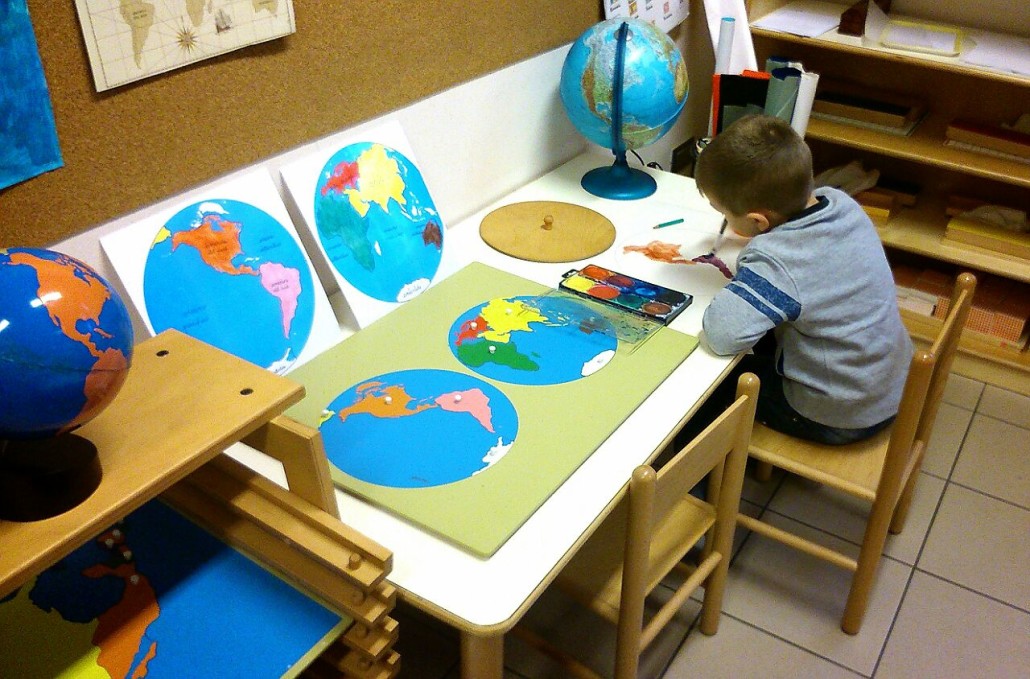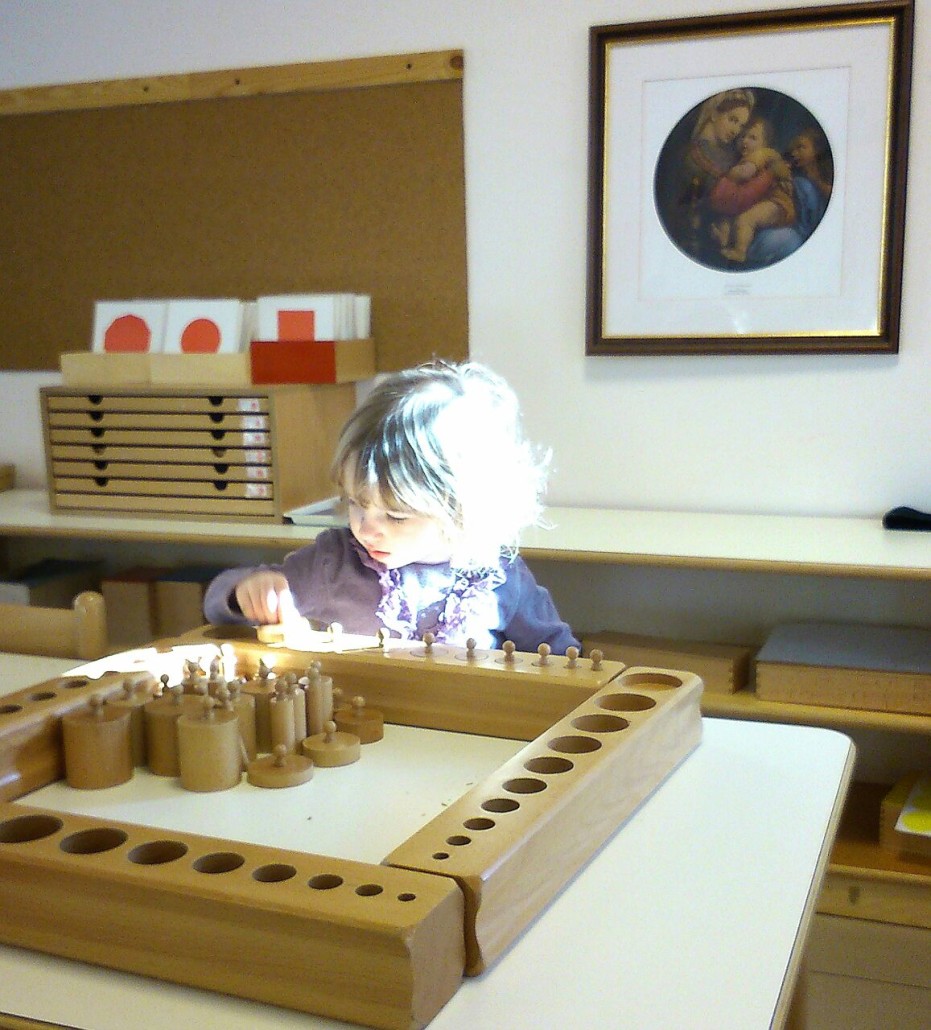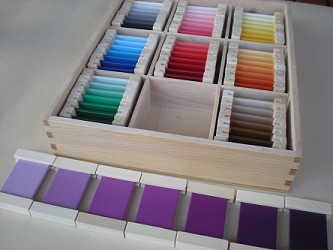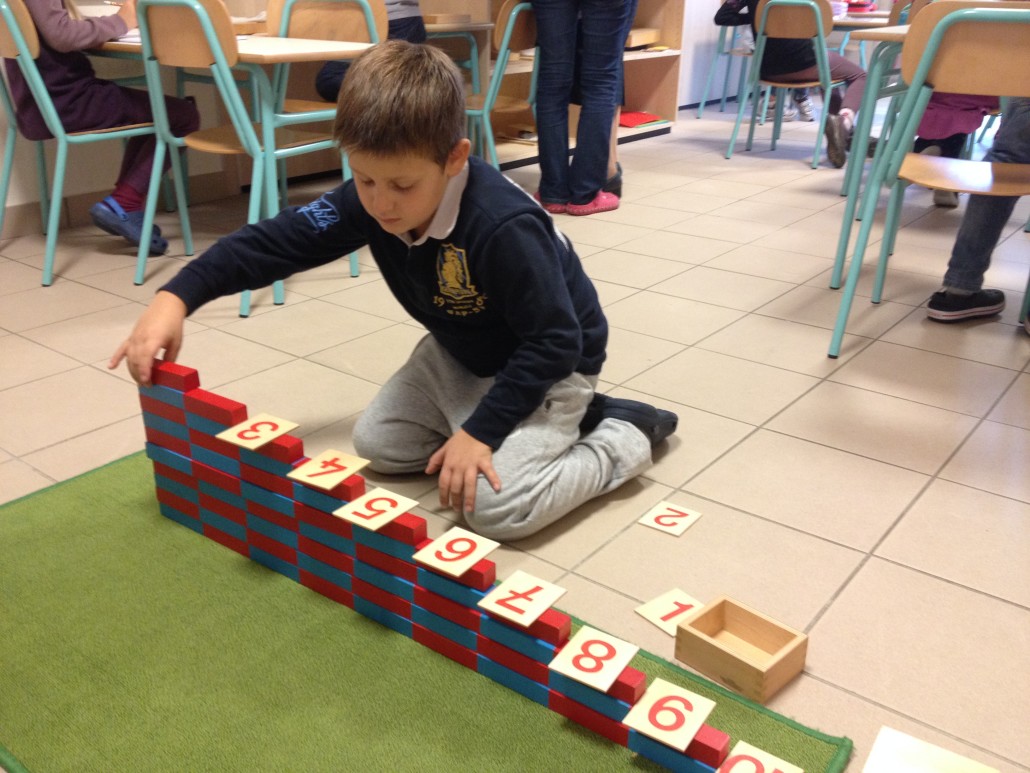The Montessori materials
Letters of the alphabet to be recognized by touch, geometric shapes of all kinds, rods of various lengths to assimilate the concepts of long and short, many tools to learn to count, tablets of different weights, wooden models to understand plants, animals and geographical territory, are just some examples of the Montessori material.
The Montessori method promotes hands-on learning. “Doing” helps children internalize concepts and ideas. Maria Montessori defined the hand as “the organ of intelligence” and she invented a series of useful objects to aid learning.
This is a multisensory approach where visual and directional memory (shape of letters and direction of writing) is reinforced by the tactile and kinaesthetic experiences. Language activities also include manipulatives that promote writing and understanding punctuation and sentence structure.
Young children, and particularly children between the ages of three and six years, are naturally capable of absorbing a great deal of information and acquiring many skills primarily through the senses. As they progress in their exploration of classroom materials, children learn about their environment, identify its characteristics, conceptualize categories and gradually develop abstract thinking skills. Children gradually organize the world around them into ordered categories thus creating a springboard for further exploration and discoveries. Children explore qualities such as shape, size, density, weight, sounds, taste and smell in order to grasp concepts involving measurements, comparison of similarities and differences, gradation and equivalence.
The teacher introduces and demonstrates how to use Montessori materials. Then materials are ready for individual use and children are autonomous to explore and to monitor their own progress and mistakes.




A good example for the application of Montessori materials is in the development of mathematical concepts. Numbers are everywhere and math is essential for everyday life. Moreover, independent mathematical thinking is closely linked to problem solving skills in general as well as attention and organizational skills, coordination and general independence. A sensory-based approach to the development of mathematical thinking is highly effective in promoting enthusiastic learning of math. Children are able to observe and explore how numbers increase, decrease, change and relate to each other using multisensory manipulations. They are not hurried or pressured to produce “results” during their exploration. Montessori materials help children build a solid foundation for grasping abstract concepts and the learning process is engaging and enjoyable.
Children are free to choose materials and activities based on their genuine needs in any particular moment. There is no pressure to move on to the next thing. Children are free to repeat tasks and, in fact, repetition is encouraged as a way to strengthen and refine foundational skills. As children freely choose and practice with materials and activities, teachers can observe students’ preferences in patterns of learning.

